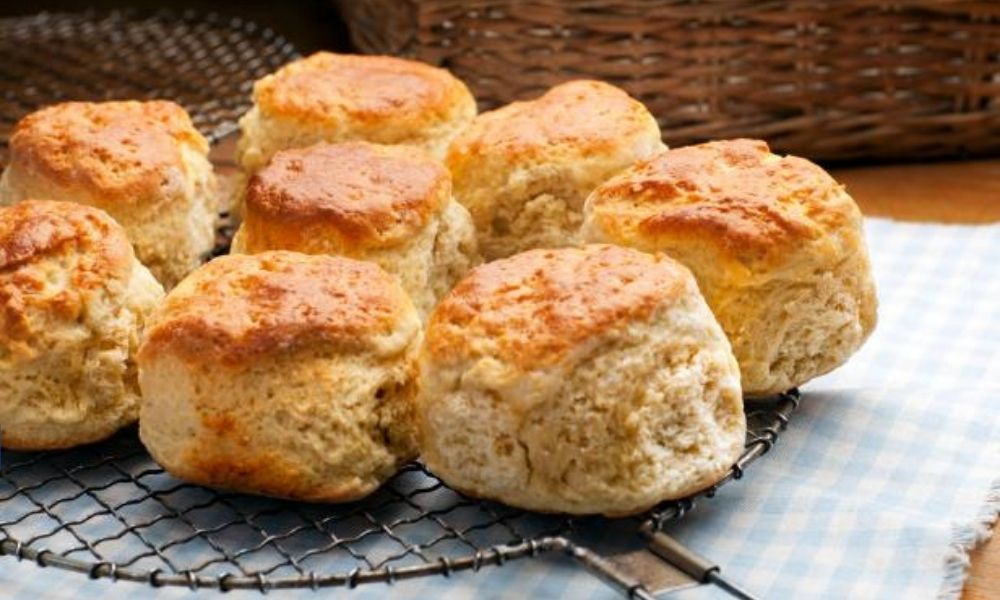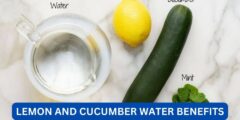Baking soda, also known as sodium bicarbonate, is a staple ingredient in most kitchens. It is a versatile and inexpensive product that has been used for centuries in cooking and baking. But have you ever wondered what exactly baking soda does in a recipe? In this article, we will delve into the science behind baking soda and its role in baking. We will also explore its various uses and benefits, and provide tips on how to use it effectively in your recipes.
Contents
What is Baking Soda?
Baking soda is a chemical compound with the formula NaHCO3. It is a white, crystalline powder that is slightly alkaline in nature. It is made up of sodium, hydrogen, carbon, and oxygen atoms. Baking soda is a naturally occurring substance, but it can also be produced synthetically.
It has a long history of use in cooking and baking, dating back to ancient civilizations such as the Egyptians and Greeks. In the 19th century, baking soda became widely available and was used as a leavening agent in baking. Today, it is a common ingredient in many recipes, from cakes and cookies to bread and pancakes.
The Science Behind Baking Soda
When baking soda is combined with an acidic ingredient, such as lemon juice or buttermilk, it produces carbon dioxide gas. This gas is what causes baked goods to rise and become light and fluffy. This process is known as leavening, and it is essential in baking as it creates the desired texture and structure in baked goods.
Read:Mastering the Art of Standardized RecipesWhen baking soda is heated, it undergoes a chemical reaction that produces carbon dioxide gas, water, and a salt. The carbon dioxide gas gets trapped in the batter or dough, causing it to expand and rise. The water and salt produced during the reaction also contribute to the flavor and texture of the baked goods.
It is important to note that baking soda needs an acidic ingredient to activate its leavening properties. Without an acidic ingredient, baking soda will not produce carbon dioxide gas, and your baked goods will not rise. This is why most recipes that call for baking soda also include an acidic ingredient, such as buttermilk, yogurt, or vinegar.
Uses of Baking Soda in Baking
Baking soda has a wide range of uses in baking, from leavening to tenderizing and enhancing flavors. Let’s take a closer look at some of its most common uses.
Leavening Agent
As mentioned earlier, baking soda is primarily used as a leavening agent in baking. It is commonly used in recipes that do not contain acidic ingredients, such as cookies, cakes, and quick breads. When combined with an acidic ingredient, baking soda produces carbon dioxide gas, which causes the batter or dough to rise and become light and fluffy.
Read:How to make lemon and cucumber water benefits?One of the main advantages of using baking soda as a leavening agent is that it reacts quickly, producing carbon dioxide gas as soon as it comes into contact with an acidic ingredient. This is why it is often used in recipes that require immediate leavening, such as pancakes and waffles.
Tenderizing Agent
Baking soda is also known for its tenderizing properties. When added to meat, it helps to break down the proteins, making the meat more tender and easier to chew. This is why it is commonly used in marinades for tougher cuts of meat, such as beef or pork.
When using baking soda as a tenderizing agent, it is important to use it in moderation. Too much baking soda can make the meat mushy and give it an unpleasant taste. It is recommended to use about 1/4 teaspoon of baking soda for every pound of meat.
Enhancing Flavors
Baking soda can also enhance the flavors of certain ingredients in a recipe. It works by neutralizing the acidity of certain ingredients, such as tomatoes, and bringing out their natural sweetness. This is why it is often added to tomato-based sauces and soups to balance out the acidity and make them more palatable.
Read:How much is a recipe worthBaking soda can also be used to enhance the flavors of chocolate-based desserts. It helps to neutralize the bitterness of cocoa powder, making the chocolate taste richer and more intense.
Benefits of Baking Soda in Baking
Baking soda offers a range of benefits in baking, making it a must-have ingredient in any kitchen. Let’s take a look at some of its key benefits.
Cost-effective
Baking soda is an inexpensive ingredient that offers great value for money. A small box of baking soda can last for a long time, as only a small amount is needed in most recipes. This makes it a cost-effective option for those on a budget.
Easy to Use
Baking soda is easy to use and does not require any special skills or equipment. It can be easily incorporated into recipes by simply adding it to the dry ingredients or mixing it with an acidic ingredient. This makes it a convenient option for both novice and experienced bakers.
Health Benefits
Baking soda has been used for centuries as a natural remedy for various health issues. It is known for its antacid properties, which can help to relieve heartburn and indigestion. It is also believed to have anti-inflammatory and antibacterial properties, making it a popular ingredient in natural toothpaste and deodorants.
However, it is important to note that baking soda should be used in moderation and should not be consumed in large quantities. Excessive consumption of baking soda can lead to health problems, such as electrolyte imbalances and stomach upset.
Tips for Using Baking Soda in Baking
Here are some tips to help you use baking soda effectively in your baking:
- Always check the expiration date of your baking soda before using it. Expired baking soda will not produce the desired results.
- Measure accurately. Too much or too little baking soda can affect the texture and flavor of your baked goods.
- Use baking soda in recipes that call for acidic ingredients, such as buttermilk, yogurt, or vinegar.
- Do not overmix the batter or dough once you have added the baking soda. Overmixing can cause the carbon dioxide gas to escape, resulting in flat and dense baked goods.
- Do not substitute baking soda for baking powder. Baking powder contains both baking soda and an acidic ingredient, so it can be used in recipes that do not call for an acidic ingredient.
In Conclusion:
Baking soda is a versatile and essential ingredient in baking. Its leavening, tenderizing, and flavor-enhancing properties make it a valuable addition to any recipe. It is also cost-effective, easy to use, and offers various health benefits. By understanding the science behind baking soda and following these tips, you can use it effectively in your baking and create delicious and fluffy baked goods every time.
So the next time you reach for that box of baking soda, remember its important role in your recipes and the many benefits it offers. Happy baking!









